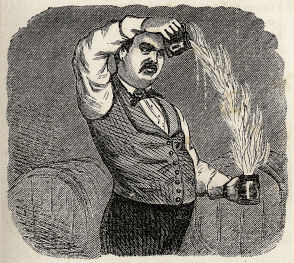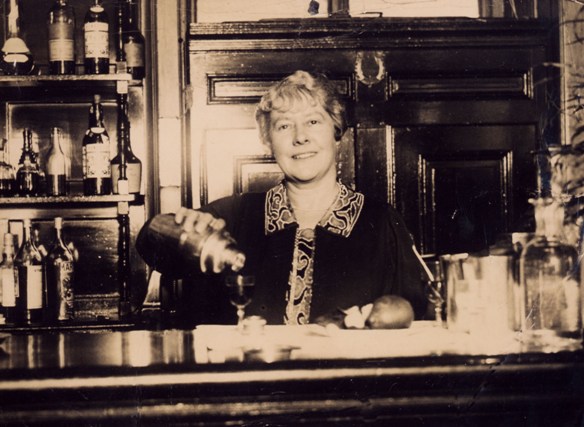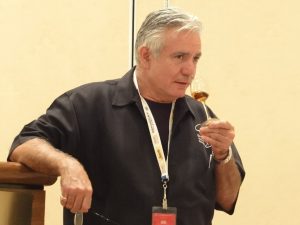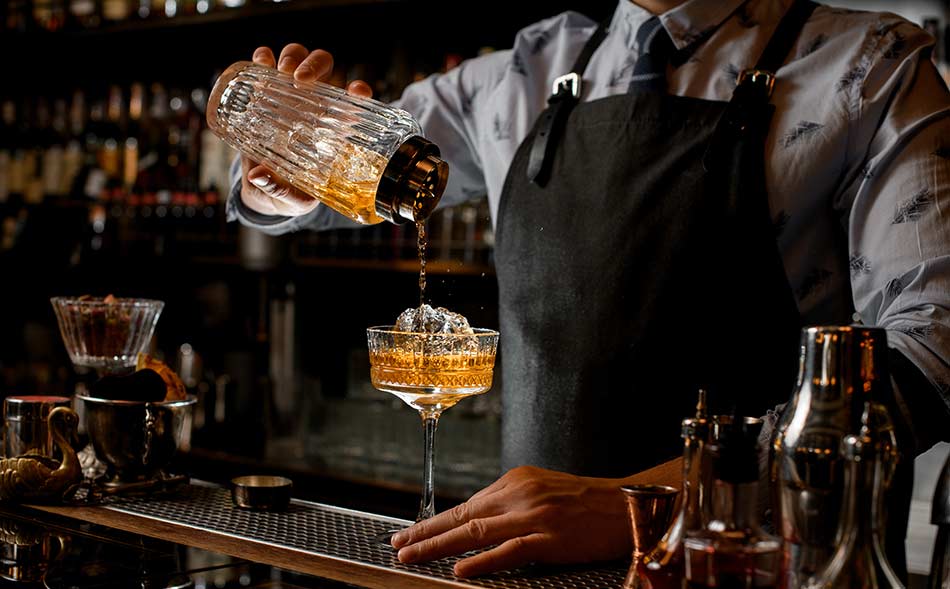While people have been mixing drinks for much longer, it wasn’t until the early 1800s that mixology culture took off and modern Bartending became the legitimate profession it is today. Nowadays, the cocktail scene in the United States is bigger than ever. And there are certain popular Bartenders we have to thank for that.
A Short Cocktail History
They say that to understand the present, you must know the past. So, let’s talk about the periods that defined bartending. Moreover, let’s talk about the most influential Bartenders throughout those periods who have left their mark on the profession even to this day.
The Golden Age (1806–1919)
The so-called “Golden Age” started in 1806 and lasted all the way to 1919. Cocktails were originally inspired by British punches, which contain spirits, spices and fruit juices combined in large bowls.
But it wasn’t until Jerry Thomas’ “The Bon Vivant’s Companion” that cocktails became widespread in the United States. This book solidified Bartending as a serious profession.
The first African American Bartender to write a cocktail book was Tom Bullock. He published “The Ideal Bartender” in 1917, just three years before Prohibition which ended this Golden Age.

Source: Wikimedia Commons
The Prohibition (1920–1933)
This was a dark period for Bartenders in America. With alcohol being made illegal by the 18th Amendment, work was hard to come by. That being said, many found themselves working overseas.
One such example is Harry Craddock, who worked at the American Bar at the Savoy Hotel in London. There, he invented the dry martini and published “The Savoy Cocktail Book.” This book is a great resource for classic cocktails that made London “lit” during that period.
There, Craddock was mentored by Ada Coleman, the Head Bartender of the American Bar at that time. She was also one of the first well-known female Bartenders from this period.

Source: Wikimedia Commons
The Years of Indulgence (1934–1968)
This period is spearheaded by two people who are responsible for a lot of the modern classics you see around bars to this day: Ernest Gantt (also known as Donn Beach) and Victor Bergeron (also known as Trader Vic).
These two are responsible for the birth of Tiki cocktail culture. A culture that idolized Polynesian aesthetic. They opened different establishments throughout California that embodied Tiki culture. Donn Beach also eventually opened a bar in Waikiki.
The mai tai is the most popular cocktail from this period.
The Dark Ages (1969–1989)
Not much happened in this period, which is why it’s called the Dark Ages. Many people avoided drinking cocktails because “they’re for people of the older generation.”
Instead, people preferred syrupy sweet drinks. This period lasted for about 20 years.
The New Age (1988–present)
Cocktail culture started gaining popularity again in 1988, thanks to Tom Cruise. In the movie, “Cocktail” he starred as a New York City Bartender named Brian who only took up bartending to make ends meet. Brian is eventually noticed by Doug, an older and more experienced bartender who teaches him the art of flair bartending.
This movie alone helped birth the next generation of flair Bartenders, a discipline that’s popular around the world to this day.
Besides that movie, many other individuals dedicated themselves to reviving the craft of cocktail making. And boy, did they deliver!
Some of these talented individuals are Dale DeGroff, Sasha Petraske (owner of Milk & Honey), Julie Reiner (co-writer of “Craft Cocktail Party: Delicious Drinks for Every Occasion”) and Audrey Saunders (creative lead of Pegu Club). These are just a few Bartenders who have taken the profession to new heights.

Credit: Wikimedia Commons
Dale DeGroff, also known as King Cocktail, stands out amongst them. He’s the one to restore the glory of the classic cocktails and fresh ingredients that were once replaced with artificial flavors and sour mixes.
He has published two mixology books and is the inventor of some of the most popular cocktails. Some of his signatures include the Hemingway Daiquiri (a favorite of Ernest Hemingway), the Ritz Cocktail and the Gallery Gimlet.
Most of these Bartenders participate in the Tales of the Cocktail Festival. This festival is dedicated to advancing the cocktail-making industry. It was founded in 2002 by Ann Tuennerman and takes place every year in New Orleans.
Conclusion
Cocktail culture is prevalent in America. While bartending used to have a bad reputation, the people we talked about throughout this article have changed that notion.
Nowadays, there are many competitions and festivals dedicated to bartending, where Bartenders express their creativity and skills to mix drinks and come up with innovative ways to do that.
Many people who started serving drinks just to make some extra cash have made a name for themselves in the industry and are now highly esteemed professionals.
One example is Paula Lukas: a New York bartending legend whom our team had the pleasure of interviewing. She talks about her journey, what keeps her motivated and she drops words of wisdom for aspiring Bartenders.
Then, about twenty years ago, when cocktails started gaining traction, I was asked to create a cocktail menu for a place I was managing and bartending at. It was a thrilling challenge, tapping into my artistic background to craft unique drinks. – Paula Lukas




